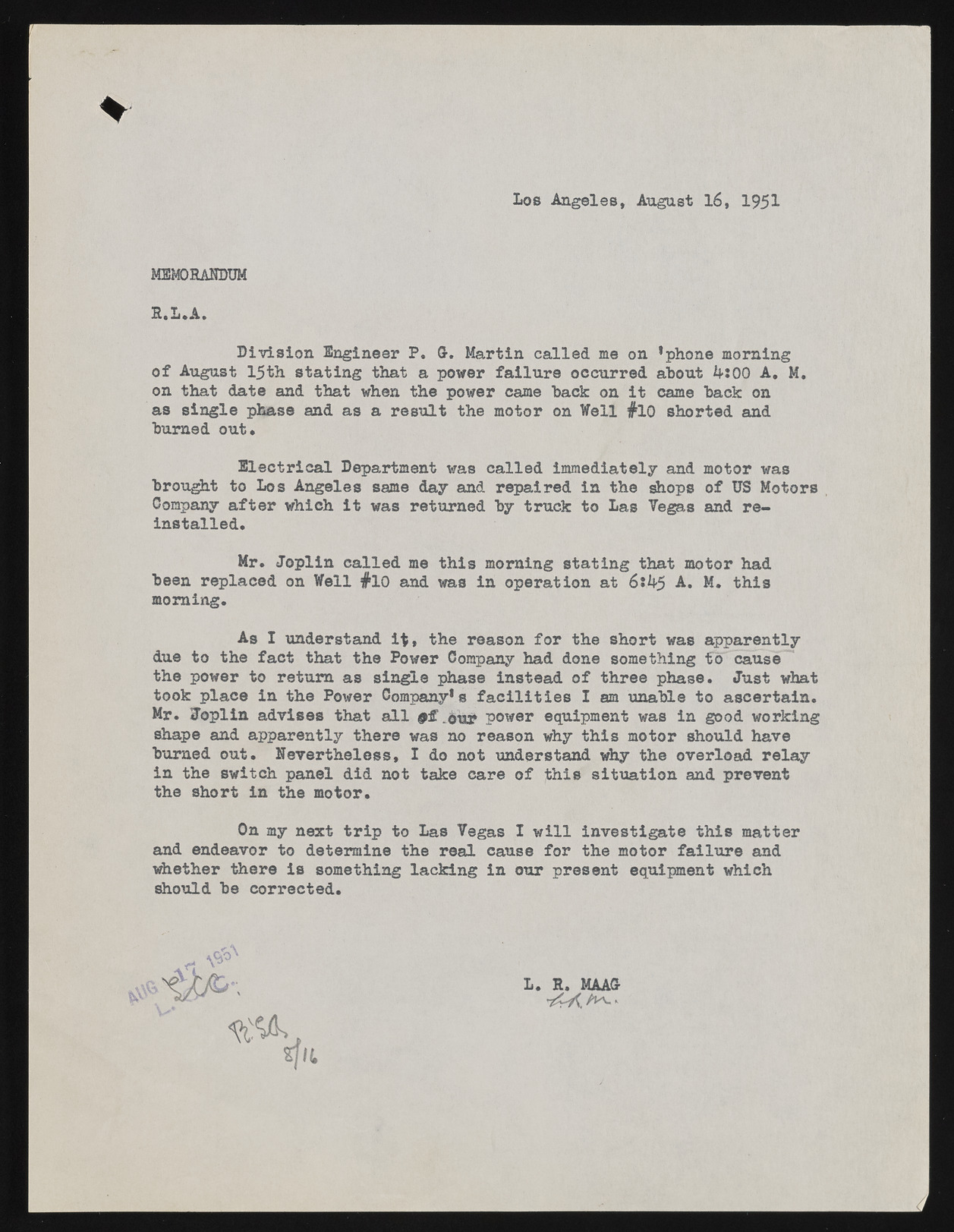Copyright & Fair-use Agreement
UNLV Special Collections provides copies of materials to facilitate private study, scholarship, or research. Material not in the public domain may be used according to fair use of copyrighted materials as defined by copyright law. Please cite us.
Please note that UNLV may not own the copyright to these materials and cannot provide permission to publish or distribute materials when UNLV is not the copyright holder. The user is solely responsible for determining the copyright status of materials and obtaining permission to use material from the copyright holder and for determining whether any permissions relating to any other rights are necessary for the intended use, and for obtaining all required permissions beyond that allowed by fair use.
Read more about our reproduction and use policy.
I agree.Information
Digital ID
Permalink
Details
More Info
Rights
Digital Provenance
Publisher
Transcription
Los Angeles, August 16, 1951 MEMORANDUM R.L.A. Division Engineer P. G. Martin called me on ’phone morning of August 15th stating that a power failure occurred about hi 00 A. M. on that date and that when the power came hack on it came hack on as single phase and as a result the motor on Well #10 shorted and huxned out. Electrical Department was called immediately and motor was brought to Los Angeles same day and repaired in the shops of US Motors Company after which it was returned by truck to Las Vegas and reinstalled. Mr. Joplin called me this morning stating that motor had been replaced on Well #10 and was in operation at 6*1*5 A. M. this morning. As I understand it, the reason for the short was apparently due to the fact that the Power Company had done something to cause the power to return as single phase instead of three phase. Just what took place in the Power Company's facilities I am unable to ascertain. Mr. Joplin advises that all .bur power equipment was in good working shape and apparently there was no reason why this motor should have burned out. Nevertheless, I do not understand why the overload relay in the switch panel did not take care of this situation and prevent the short in the motor. On my next trip to Las Vegas I will investigate this matter and endeavor to determine the real cause for the motor failure and whether there is something lacking in our present equipment which should be corrected. L. R. MAAG

